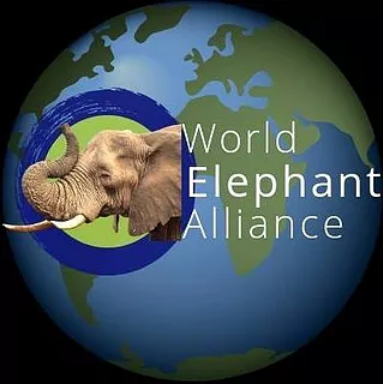Campaigns on behalf of elephants suffering in zoos are contributing to the public’s awareness of the inherent cruelty of caging all wild animals.
In Seattle, WA, Friends of Woodland Park Zoo Elephants’ (Friends) effort to retire Bamboo, Chai and Watoto, to PAWS sanctuary in CA spanned over a decade. In that time, we helped the public become aware that it is inhumane to cage elephants who are highly intelligent and far-ranging. We believe this allowed people to extend their awareness to include other wild animals. We base that on the fact that paid gate attendance to Woodland Park Zoo has steadily declined for well over a decade. People are getting it!
This graph shows that the 10-year trend is unmistakable and accelerating; people are not paying to go to Woodland Park Zoo in the numbers they used to. In fact, the 2019 paid gate attendance was at the 2004 level despite the population boom in the Seattle/Puget Sound region over the past 15 years. The downward trend is especially precipitous during the last several years. Zoo Memberships have also not kept up with the population boom. This decline included many of the years when the elephants were still in Seattle.
We believe the reason for this downward trend is that the public’s attitudes are changing. This was found to be true in a 2017 survey commissioned by Friends and conducted by GMA Research, a respected national polling company.
Here are two very revealing survey findings:
- 85% of respondents believe that people are changing the way they think about keeping wild animals in captivity.
- Only 1% of respondents said they learned about wild animals by going to the zoo even though the zoo was offered as a choice.
The captivity industry did their own research in 2014. The World Association of Zoos and Aquariums found that actions people would take to protect wild animals and their habitat significantly DECREASED after a zoo visit. In other words, the captivity industry debunked their own time-worn claim that seeing a wild animal in a zoo results in people caring and taking action to advance conservation. It does not.
So there you have it. A visit to a zoo is not about conservation and education but it is primarily for entertainment — on the backs of suffering wild animals.
We know that elephants and all the other wild animals in a zoo retain their wild instincts. It takes generations of selective breeding to domesticate an animal and that’s not what zoos do. This means that everything that is important to a wild animal’s life is denied to them. Caged animals cannot engage in some of the most natural behaviors such as courting, mating, hunting, foraging, digging, burrowing, rubbing up against a tree, running and perhaps the worst of all is that they cannot flee. Caged in a zoo, wild animals suffer physically and psychologically.
Friends had a lot of help which is essential for success. The Seattle Times, for which we were incredibly grateful, did a lot of heavy lifting with seventeen editorials railing against the zoo, writing opinions like, “The business of breeding elephants, displaying them and exploiting them as revenue drivers should end.” Many other media outlets covered Friends’ efforts which helped to spread awareness.
Friends’ left no stone unturned in making the public aware of the plight of the elephants. It used social media, aerial and bus advertising, letter writing (including to zoo donors), calling, banner drops, demonstrating at the zoo and city hall, leafletting, and speaking on TV and radio. We held press conferences and met with the decision makers. All these efforts worked toward making people aware of the suffering taking place right in their own back yard.
All throughout Friends’ campaign, we offered an alternative to the elephants leaving Seattle. In other words, we offered a solution to the void of taking something away. We, along with one Seattle City Councilmember, suggested using technology as the humane way to champion education and the conservation of wildlife. We promoted virtual connection as a way for people to immerse themselves in the lives of wild animals where they live; their triumphs and struggles. This would be a way for people to learn how animals raise their young, how they outwit competitors, how they avoid their enemies and how they play their vital role in keeping the ecosystem healthy. Technology can open worlds utterly beyond the potential of any traditional zoo—and without any of the suffering.
The outcome of our campaign was a tragedy for Bamboo and Chai. Woodland Park Zoo’s management prevailed in sending them to another zoo. But we can claim some success in that the zoo’s goal of becoming an elephant breeding center ended (Chai was artificially inseminated 112 times) with the closure of the elephant exhibit. The long term effects of the negative publicity and the spotlight on how harmful zoo life is for elephants and other wild animals has clearly had an effect. People are voting with their feet and not going to the zoo in the numbers they had in the past.
_________________________
Alyne Fortgang is Co-founder of Friends of Woodland Park Zoo and led the decade-long effort to retire Bamboo, Chai, and Watoto to PAWS sanctuary in California.

